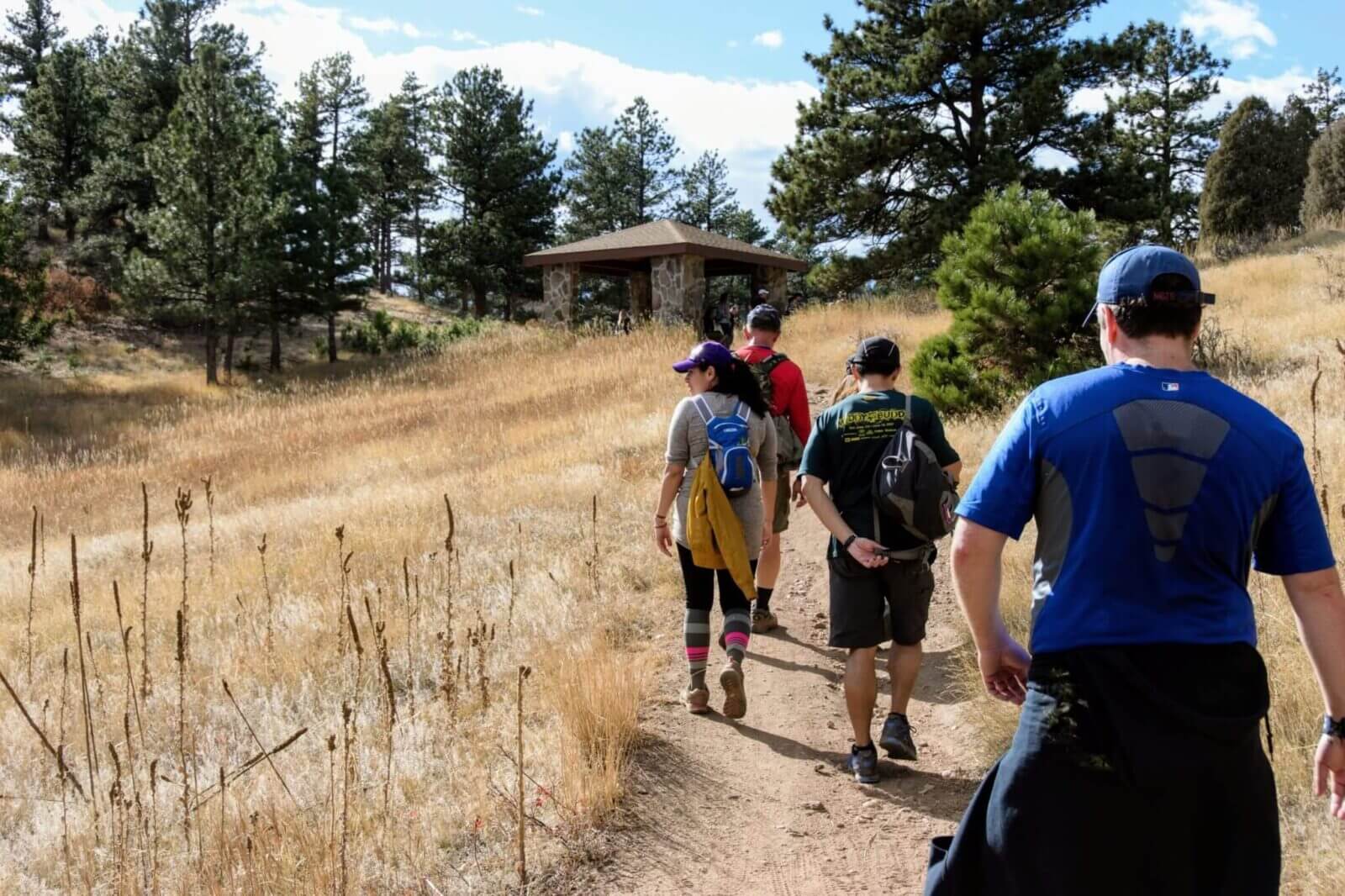Whether it’s the first snow of the season and cloudy, or you’re hiking on a bright summer day, there are some essential items that you should always take hiking, regardless of the season. The key to having a safe and comfortable hike is taking only the supplies you need for the adventure. Travel lightly, but carry the essentials. Here’s our list of hiking essentials in no particular order.
First aid supplies (ace bandage , athletic tape
, athletic tape , antiseptic cream
, antiseptic cream )
)
On one of our recent hikes in Colorado, I had just reached the end of the hike when I received a notification from one of our hikers that she had hurt her leg. It sounded like a possible sprain or twist, but there wasn’t much anyone could do. The right supplies weren’t in our day packs to help with something like a sprain. From then on, I decided to keep a trusty ace bandage, some athletic tape, and antiseptic cream in my bag. They’re super light supplies, and can be used in many different situations to help with an injury.
Recommendation: First aid kit
Sunglasses (essential)
Besides looking cool, sunglasses also shield your eyes from UV light. Ultraviolet light is particularly strong at higher elevation, and is also present on cloudy days. Any time you’re hiking during the day, sunglasses are important.
What we use: Oakley sunglasses
Sunscreen (essential)
We’ve all heard it – even when it’s cloudy, you can still get burnt. There’s been much written on the importance of keeping skin shielded from the sun. If you’re not into sunscreen, wear a lightweight long-sleeve sun-blocking shirt
, and a sun shielding hat. Whatever your preference, keep your skin safe, and your body cool.
What we use: Kiss my face sunscreen
Energy bar or trail mix and water (essential)
Energy and hydration are absolute hiking essentials, and sometimes you burn more than you plan to. What was originally planned to be a 5 mile hike can easily turn into a 7-10 miler if there’s something cool to explore, or you take the wrong turn. It happens. Keep an extra reserve of water and food with you that includes both carbs and protein. The combination of both types of fuel help to give both a burst of energy, and some sustained longer-lasting energy as well.
What we use: Bearded brothers and EPIC bars
Camera (optional)
Even though most of us have smartphones with great cameras built-in, there’s something gratifying about the experience of using an actual camera to capture the moment. I enjoy using a DSLR (not the lightest thing), but a more compact point-and-shoot works well too. With a separate camera, you won’t accidentally pull your phone out and see an email from work, or a text message jarring you back into the busy life you’ve decided to shut out for the duration of your hike.
What we use: Sony a6000 mirrorless DSLR
External phone battery (optional)
As cellular signal decreases, mobile phones use more power to stay connected. If you’ve ever noticed, there’s often lower signal when you’re in wilderness because understandably, cellular companies tend to build towers in population centers. Make sure you don’t get caught with a dead phone in an emergency, especially if you’re using your phone for mapping your route. External phone batteries are inexpensive and work with most modern phones.
What we use: RAV Power power banks
Phone with essential apps (optional)
Speaking of phones, carrying a smartphone is a smart choice. Developers have created an incredible variety of apps that can be used with and without internet access to help with navigating, tracking, and augmenting your hiking experience. Protip: Most modern phones have a DND (do not disturb) function that’s great for keeping pesky interruptions out while using your phone during a hike. Many phones even let you schedule when to turn DND on/off (which is a great way to make sure you don’t miss an important notification after your day hike).
What we use: Best hiking apps, staff picks
Head lamp (essential)
One evening I was hiking back from the top of a mountain as the sun was setting. I made it out of the forest just as the last daylight disappeared. As I got into my car, I realized I had made two easy-to-fix mistakes. I was wearing sunglasses and left my regular glasses in the car (they’re prescription, so wearing sunglasses in the dark was better than none at all), and I didn’t bring a headlamp. A headlamp is a lightweight compact tool that can get you out of a tight spot when you’ve run out of sunlight.
What we use: Black diamond head lamps
So there you have it, hiking essentials for your next adventure. That’s our list, what’s yours? Leave it in the comments.


When you want to hike you really need to consider many things. It is important to take only the supplies you need for the adventure. This is very informative article.
I realize this is a geek group, but I’ve yet to find a smartphone map app that is close to being as good as a real GPS. I use a Garmin Oregon 600T with a detailed map chip. I also highly recommend an old fashioned compass and map as a backup; electronics can fail or run out of power. Plus the smartphone apps really drain the battery, where my 2xAA batteries in my Garmin last all day.
Hey Bruce thanks for your comment! I’d love to talk more with you about your GPS quests. Interested? HMU in the contact form…
a 100% cotton bandana/scarf is essential for hot or cold weather. it will provide protection from the sun, keep your neck warm in the cold and keep you cool in the heat (douse water on it and wrap around your neck).
Thanks for the tip, Eileen!